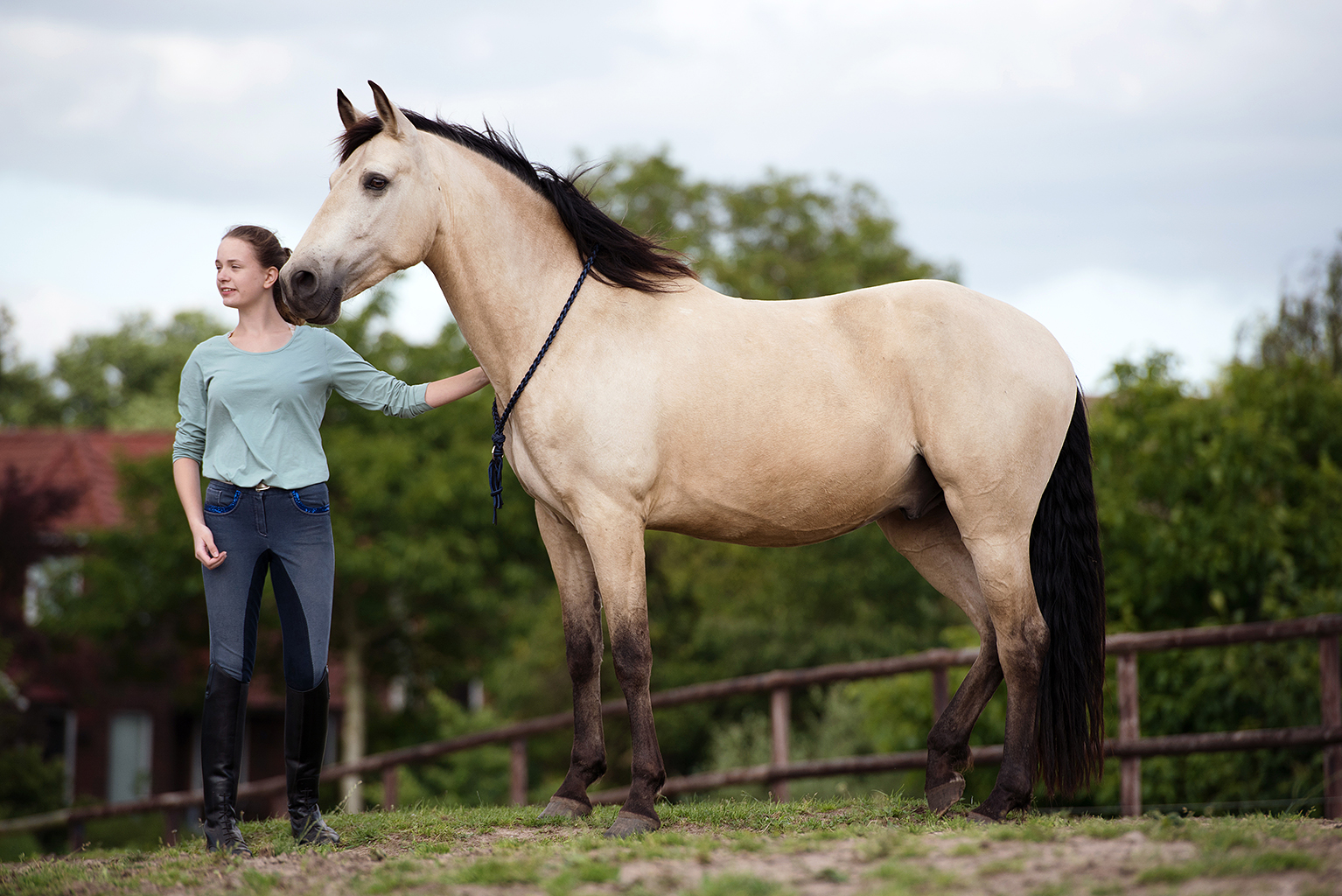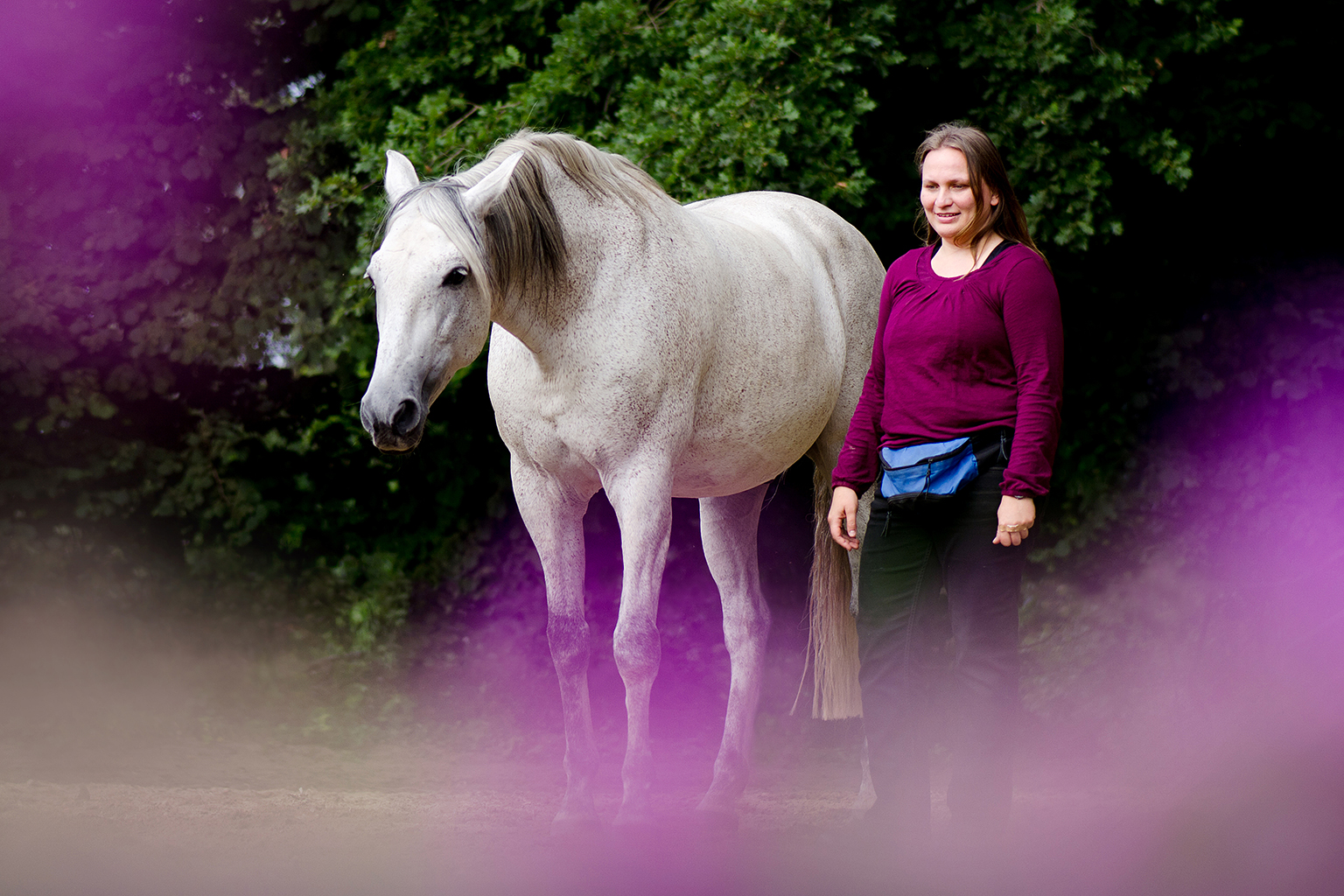Taking a break
Finding the calm within oneself
Food is a big motivator for horses. So on one hand, it is really easy to train horses by the means of food rewards. On the other hand, it is really difficult to create a calm and relaxed atmosphere in training if food is present. Frequently in my seminars, I meet horses that are almost unable to simply relax next to human beings when food is present as well. Then, it is not possible to take a real break, and either learned lessons are continuously repeated, or the horse stays tensely put, sort of impatiently counts in its mind, and waits for the next click. This kind of focused, excited attention involves two risks in particular. First, it mentally exhausts the horse in a very profound way. And second, inattention due to agitation may increase, and become an integral component of being together. So, the following video shows my perfect idea of a relaxed horse taking a break from training. Salima, the purebred Arabian mare, and her favorite human being Lea allow us a glimpse into a private moment during one of my seminar days.
What are the characteristics of a relaxed break?
In my opinion, Salima perfectly displays the most important aspects of breaks in training in this video:
Subtitles available: German and English
Body language
Salima moves very little, she stays close to the human being, and does not ask for the next task, or even pushing a person. She holds her head in a rather low position, and repeatedly rebalances herself. So, a relaxed horse is not a horse that keeps standing in the same position as if carved in stone for minutes but it is a horse that simply stands in a relaxed manner. Standing comfortably also includes repeatedly changing one’s position in order to equally distribute the stress over the whole body and not quickly exhaust the body. So, I train the posture for break situations only casually and approximately. The horse should not stand in a specific way but should find its own personal form of relaxation and the accompanying posture.
Glossary – In short
Resting a leg
A possible characteristic of relaxation in training is the resting of a leg, or the bending of one of the hind legs. Salima is making herself comfortable while standing around, and thereby shows that she does not expect to receive a request from us right now. She can take her time to relax, and can completely calm down.
Freedom
Salima stays without a halter or a lead (most of the time 😉 ) with us. A break in training also means to me that we observe with pen senses whether the horse stays voluntarily with us, and adapts to the moment’s atmosphere, or whether it walks away, and when. This tells us a lot about the atmosphere in training, and about the subliminal requirements a horse experiences. Salima is free to decide in this situation whether to stay or to walk away. She is not told to remain in a specific position but is allowed to find her own place if she stays.

The human’s role
Lea shows us the most important characteristics of skillful break management. Her body language is reduced, slow, and calm. She neither requests new tasks nor does she attract the horse’s attention by touching it for example. This allows Salima to experience phases in training that do not require specific attention but are characterized by being next to each other and by being together with the other.

Focus and attention
The high art of breaks in training requires that we ourselves remain calm, and keep our cool; that we ourselves take our time, enjoy the moment, and imagine that we could do nothing at all for hours at once if necessary. This also supports the horse to really calm down, and relax. Breathing together smooth and slow has its place just like looking into each other’s eyes in a gentle and not focusing manner. Calmness and relaxation are essential components of training for me, and I consciously include such breaks as islands of tranquility particularly after “exciting” lessons, or rapid movements. As a rule, I aim to spend as much time with breaks from training as I spend with training specific behavioral responses especially when working with untrained or little trained horses. This ensures that most horses remain soft, well balanced, and are able to focus on their tasks in a relaxed manner. I also try to consciously not focus on the food myself in order to really create moments in which this otherwise crucial aspect of positive reinforcement does not play any role. Of course, food is present at all times and also during the breaks; the treat pouch is visible, and the horse very likely is able to clearly smell all the different treats in it. Yet, treats are not offered continuously in order to establish a specific behavioral response but handed over only sporadically to create a pleasant overall atmosphere in training, and to avoid directing the horse’s focus towards individual behavioral details.
Marlitt Wendt & Conny Ranz


